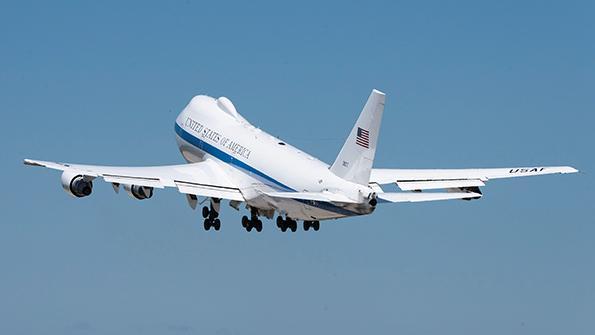USAF's Next Airborne Nuclear Command-And-Control Aircraft, Needs Four Engines

The U.S. Air Force (USAF) plans to increase spending for its next airborne nuclear command-and-control aircraft, and it most likely will choose used aircraft.
USAF currently uses an aging fleet of Boeing E-4Bs.
The 595th Command and Control Group's commander, Col. Brian Golden urged that "the capabilities of the current fleet have shown one critical capability the follow-on aircraft needs: four engines".
For the operators of the E-4B Nightwatch, the aircraft needs four engines, and it has to be heavy. The fact that it might be older and used is less important.
Golden said. “You don’t have to buy a brand-new aircraft. It’s not like a car. . . . You can buy an older aircraft—a few years old, five years old, it doesn’t matter—and the engineers will strip it down and build it back up. So it’s not a risk at all.
"For the jet’s classified missions, the extra power and redundancies mean four engines are needed. And it needs to be big."
“You need a very large, four-engine aircraft to execute our mission set,” Golden says. “There was a lot of discussion on: Could it be done on two engines? Partly. A lot of risk would have to be taken, and it wasn’t the Air Force’s risk to take. . . . So those type of decisions have already been made, and they’re moving out pretty soon.”
The government wants a full and open acquisition strategy using a “very large platform,” and the government is “willing to consider used commercial derivative aircraft.”
This is an abbreviated version of an article by Brian Everstine that appeared in Aviation Week & Space Technology. Subscribers can discover more about USAF's next airborne nuclear command-and-control aircraft by reading the full article "USAF Says Boeing E-4B Replacement Will Need Four Engines".
Become a Aviation Week & Space Technology subscriber.





Comments